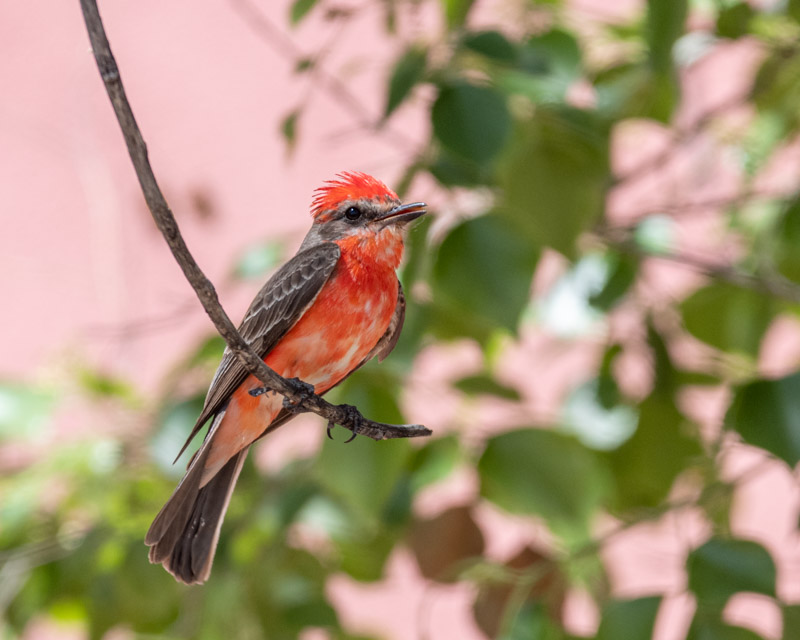By Dan Weisz
Earlier this week, a friend told me about a nest of Vermilion Flycatchers she had seen. When we went to the site, we were shocked to see that landscapers had just gone through the area and trimmed trees. In the first photo, you can see that they had cut a branch right below and adjacent to the nest, one just above and to the right of the nest, and one to the left of the nest. It was shocking! We were not sure whether or not the nest had been disturbed. However, the two Vermilion Flycatchers never sat on the nest or delivered food. In the time we watched, we could not determine whether the nest had been destroyed and whether or not any eggs or chicks were in the nest. We left bewildered and worried.
The next day my friend texted me to let me know the Vermilion Flycatchers were taking food to the nest. Apparently the prior day when we had seen them, it was immediately after the tree had been trimmed and the birds were still in a kind of “shock”.
The following day, I returned to the site with my friend to see the family again. That is when I took this photo of the female Vermilion Flycatcher at the nest.
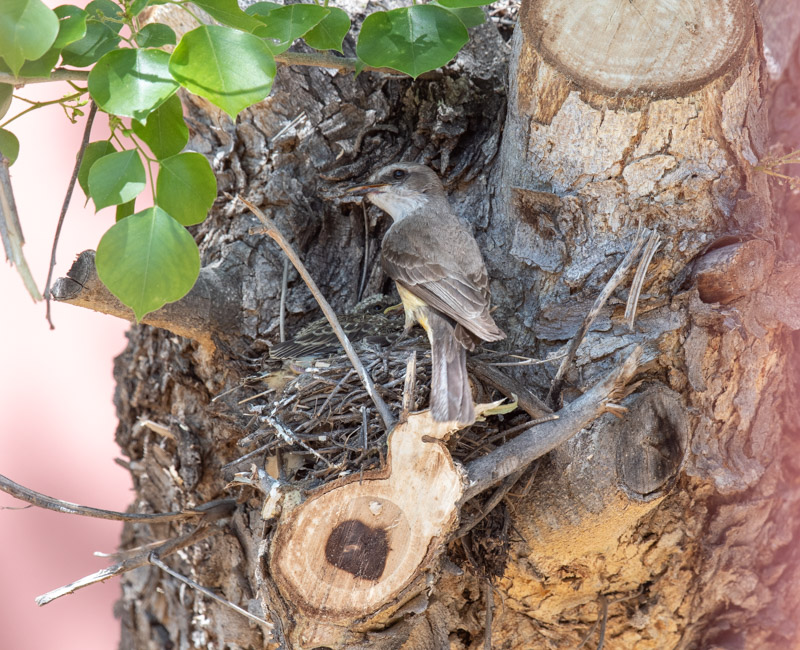
If you look closely, you can see the back of at least one chick in the nest, its eye and its beak. The chick blends into the background perfectly and the nest itself is still well concealed, even with the branches around it removed!
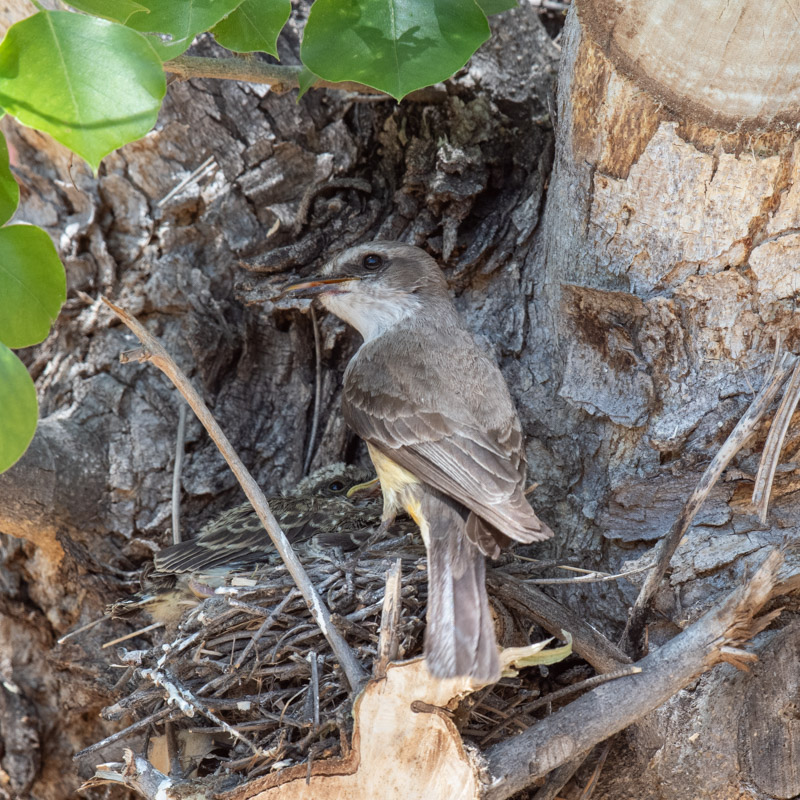
Throughout the time we observed, the mom remained close but never seemed to deliver any food. Here she is sitting on a twig that is below and just to the side of the nest.
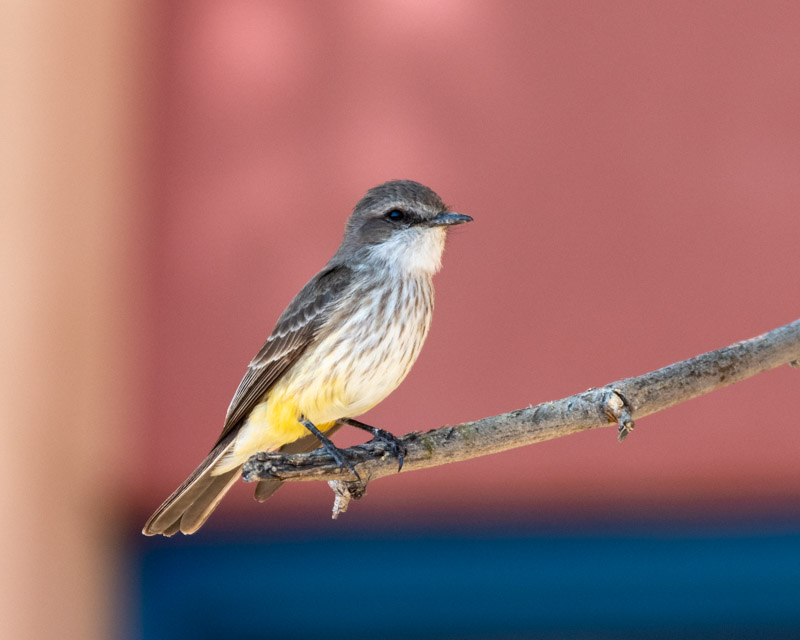
Another time that she was on the same twig, looking back towards the nest. ( FYI, Vermilion Flycatchers can be found at nearly every field or grassy area in the Foothills)
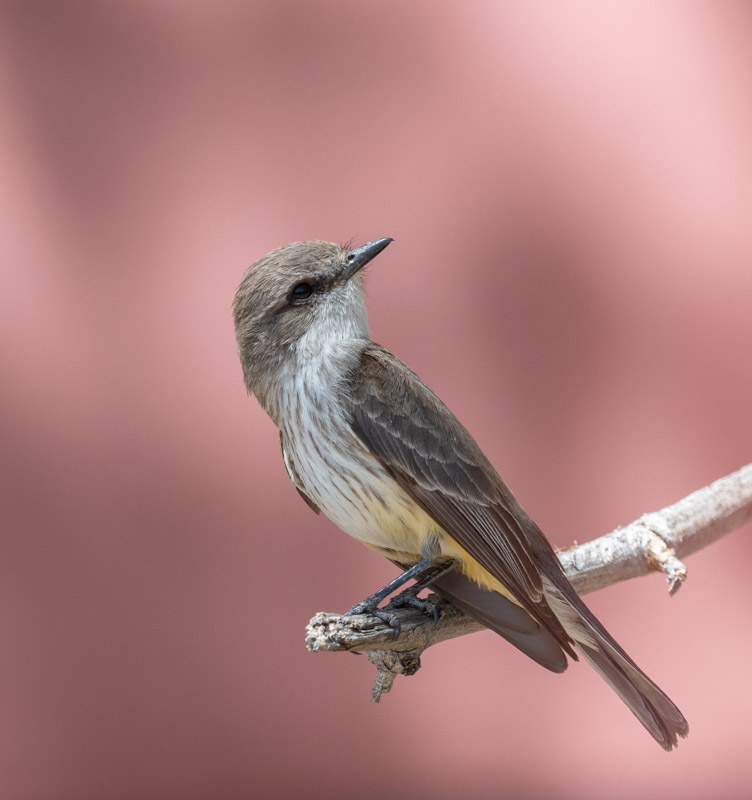
The shot below looks alarming, appearing as if her head just dropped off. She reminds me of “Nearly Headless Nick” in the Harry Potter series. But the bird was looking downward and the wind caught her neck feathers just right. It is amazing to see how small her body really is, hidden by her feathers
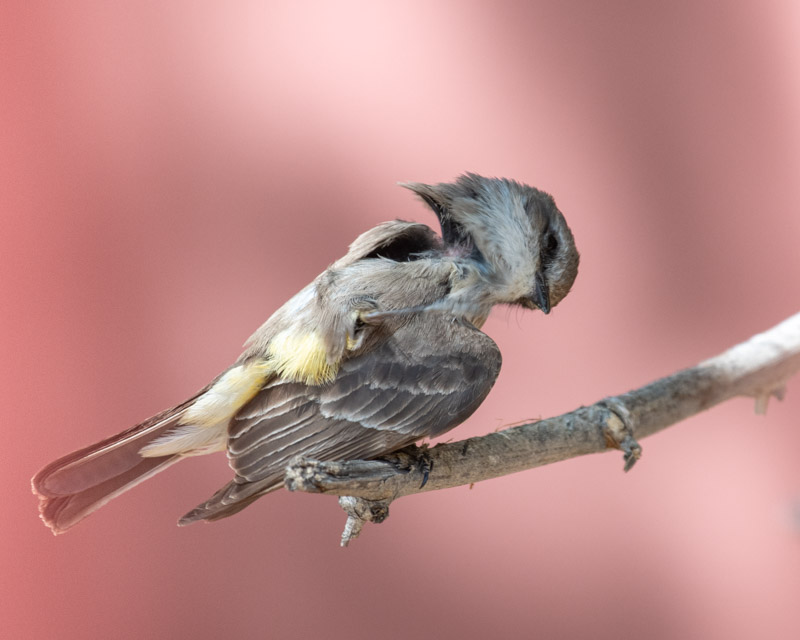
The papa Vermilion Flycatcher was around and very active. He was hunting constantly. The many white feathers on him make me feel that this is a first year male and that he has not completed his molt. But he still is a beautiful bird.
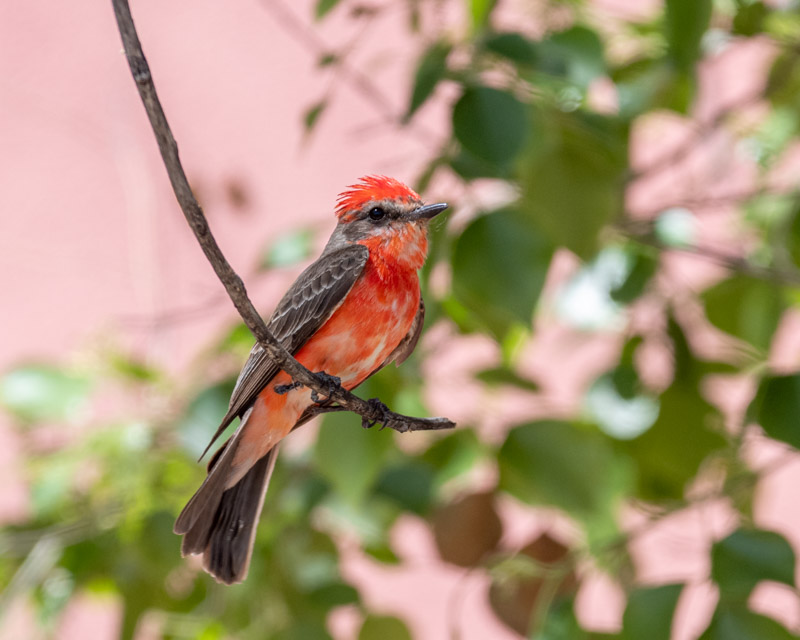
Every time one of the parents flew by the nest the chicks perked up and opened their mouths awaiting food. When the actual food deliveries occurred, the babies’ bodies were blocked from view by the parents and the food exchange was extremely quick.
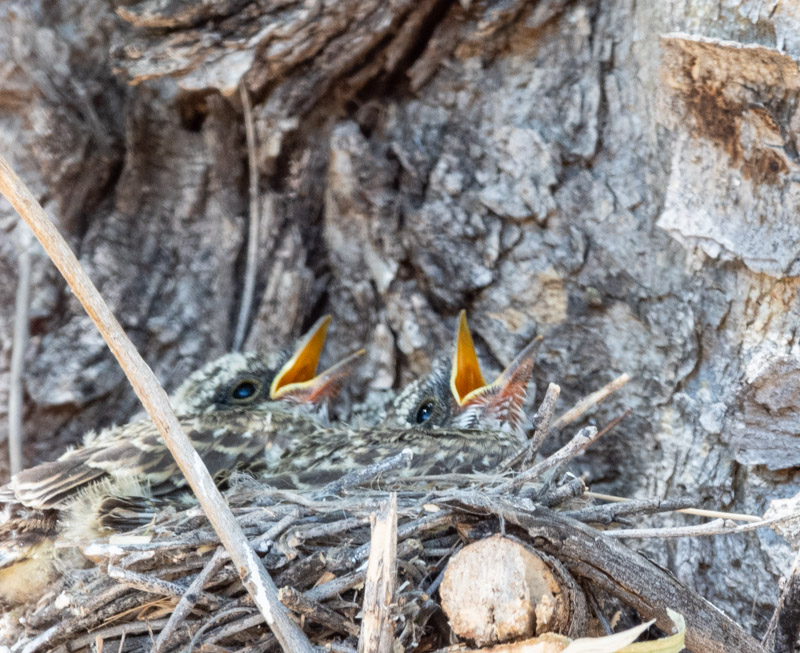
Here is Dad with a tiny insect for his chicks.
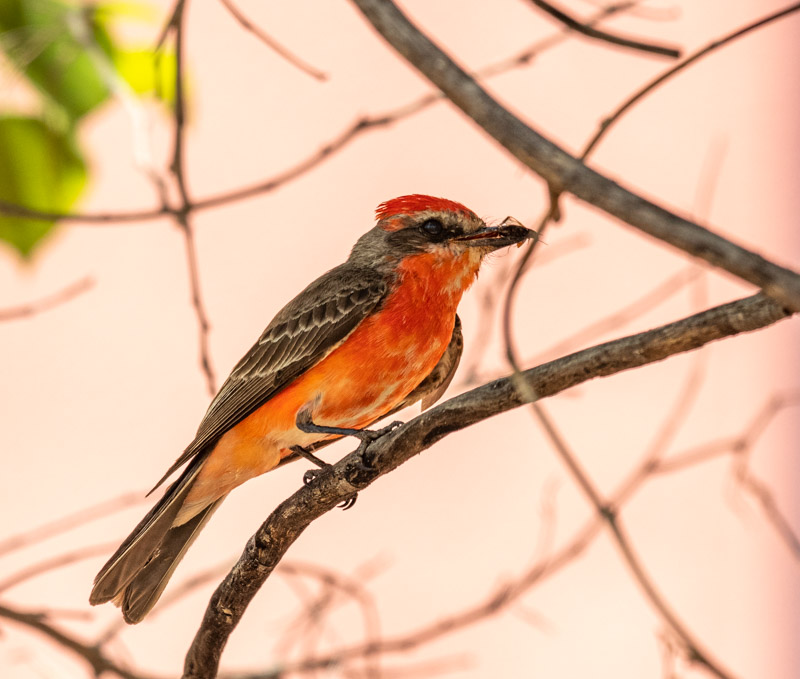
This is a special sight. One of the birds is facing away from us, about to poop. That glowing “circle” is a clump of bird ‘whitewash’ about to be expelled from the young one. Mom is in position to do a job that mothers do.
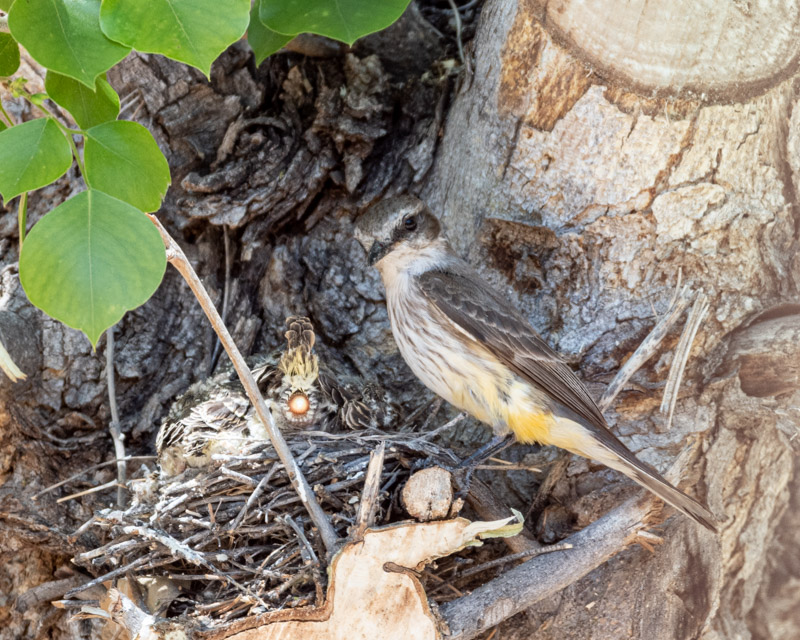
The mother Vermilion Flycatcher grabbed what is called the fecal sack and removed it from the nest. The nestling baby usually produces the fecal sac within seconds of being fed. It is a mucous membrane that surrounds the feces allowing the parent to more easily remove it from the nest. This not only helps to maintain nest sanitation, it helps to increase the likelihood that the nestlings remain healthy, and also helps to reduce the chance that predators will see it or smell it and thereby find the nest.
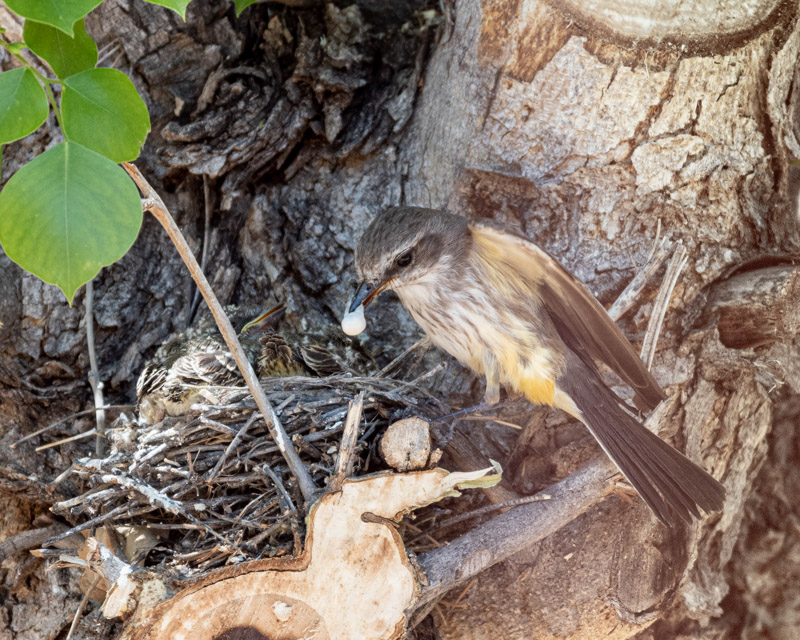
Meanwhile Dad was always around and on constant lookout for any insect in the area.
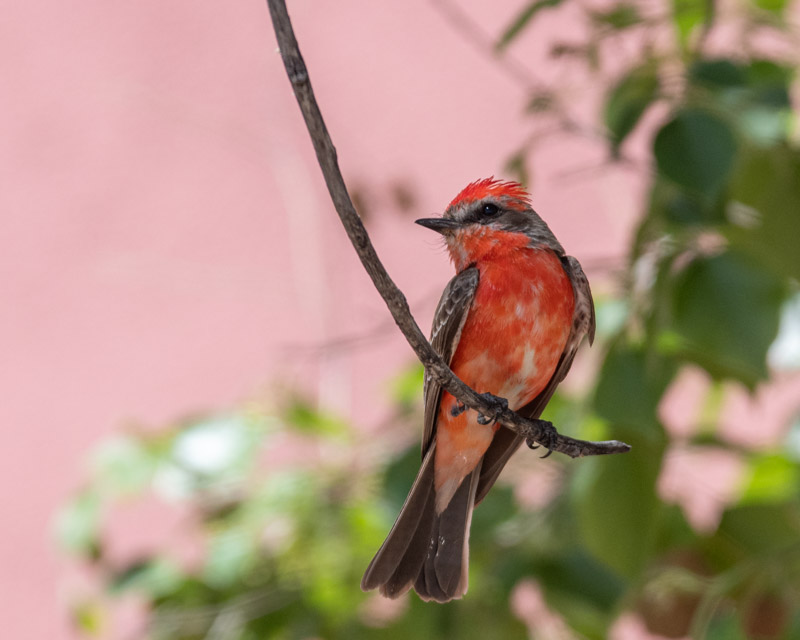
Perhaps my favorite shot of the day: It is not a smile, but I want to think that this Vermilion Flycatcher is aware of both how handsome he is and what a great job he is doing as a provider.
